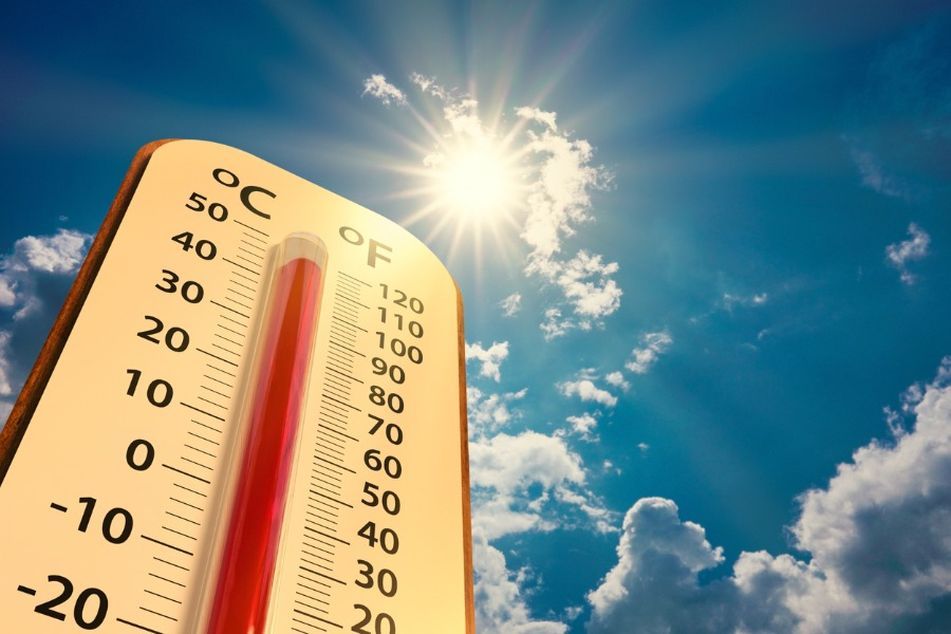(Bloomberg) — Extreme heat is set to stifle the US economy by limiting construction workers’ productivity and reducing capital investment, according to a study from the Federal Reserve Bank of San Francisco.
- Prices for some of the world’s most vital commodities — natural gas, power and staple crops like wheat and soy — are climbing.
- The world of shipping, already thrown into chaos from the Red Sea to the Panama Canal, is likely to be rocked again by parched waterways.
- And the potential for destructive wildfires is increasing.
- Some experts are predicting US natural gas prices could jump more than 50%, while wheat and coffee markets are also expected to rally.
GAS PRICES SEEN SURGING
US natural gas futures could soar to $4 per million British thermal units later this year if hot weather boosts air-conditioning use enough to erode inventories that are currently plentiful, said Gary Cunningham, director of market research at Tradition Energy. Producers, meanwhile, are curtailing output from shale basins in response to relatively low prices, setting the stage for a tighter market.Europe, which can no longer rely on Russian supply following the invasion of Ukraine, now competes with Asia for cargoes of liquefied natural gas from exporters like the US, Qatar and Nigeria. Funds have been the most bullish on European natural gas since before the energy crisis, signaling growing concern about scarcer supplies.
“This summer will almost certainly bring a rash of debilitating heat waves, particularly in the US midsection and Europe,” said Jennifer Francis, a senior scientist at the Woodwell Climate Research Center.
Severe heat in Southeast Asia starting in April prompted traders in the region to bulk up on gas cargoes.
- Scorching weather also descended on Egypt, forcing the North African nation, typically an exporter, to resort to buying LNG.
- Sweltering conditions engulfing India are boosting demand for the fuel from the power sector, according to Petronet LNG Ltd. Chief Executive Officer Akshay Kumar Singh.
In Europe and Asia, a “perfect storm” of intense heat, hurricane-driven disruptions to US exports and worsening drought that decimates hydropower in Latin America could send gas prices soaring about 50% to 60% above current levels, analysts at Citigroup said in April.
POTENTIAL FOR BLACKOUTS
- Surging temperatures across Texas are testing the state’s grid, with electricity prices for August recently rallying above $200 a megawatt-hour, the highest since 2022 for this time of year.
- The upside risk is huge:
- Prices climbed more than 800% last August amid searing heat. And the state has repeatedly teetered on the edge of widespread blackouts for the past two summers.
In Europe, blazing heat might force some French nuclear plants — which provide about 70% of the country’s power generation — to shut. That’s because many reactors rely on rivers for cooling, and when water temperatures are too high, environmental rules to protect aquatic wildlife can force the facilities to close temporarily.
INFLATION THREAT
Extreme heat, meanwhile, is set to stifle the US economy by restricting construction workers’ productivity and curbing capital investment, according to a study from the Federal Reserve Bank of San Francisco.
- The paper found that without large-scale efforts to cut carbon emissions, future increases in intense heat would reduce the capital stock, or the value of accumulated investment, by 5.4% and annual consumption by 1.8% by the year 2200.
SUPPLY SHOCKS
Wheat futures have hit the highest since July and funds are trimming bearish bets they’ve held for almost two years.
- Dry conditions in Russia, a key global exporter, are prompting analysts to cut harvest estimates. Field work in Western Europe has been slowed by excess rain, while attacks on agriculture infrastructure threaten exports in Ukraine.
- In North America, much of top US grower Kansas is suffering from extreme drought. So far, estimates from this year’s crop tour show the state’s wheat fields will produce more than in 2023, when drought was so bad many fields didn’t make it to harvest. Still, with more than a month before fields will be ready for reaping, more dry weather or blazing heat would take yields down from these forecasts.
Extreme weather was one of the drivers for cocoa’s dizzying rally, and coffee markets are now facing similar risks.
- Futures for arabica coffee, the higher-end beans favored by companies like Starbucks Corp., could jump about 30% to hit $2.60 a pound over the next few months if adverse weather and production issues prevail in Brazil and Vietnam and money managers go on a buying spree, Citigroup analysts said this month.
OPTIONS TRADING
Severe heat can affect every corner of the oil market, from production to shipping and refining.Last year, Canada’s worst wildfire season on record prompted oil and gas drillers to shut as much as 300,000 barrels a day of production. In 2023, the fires largely spared the nation’s main producing region — but the impact this year could be enormous. At the end of April, 63% of the country was abnormally dry or in drought, according to the North American Drought Monitor, creating conditions ripe for blazes.
Intense heat can disrupt refinery operations, stressing process units and impacting the ability to maintain steady internal temperatures. Any outright refinery closures would come if the grid got overloaded and the facility lost power.
- Hot weather also threatens to disrupt crude pipelines by causing vapor to build up.
- And some traders are bracing for what’s supposed to be an unusually active hurricane season, another threat to oil refiners
SHIPPING
The Rhine River — Europe’s busiest commercial waterway, which moves everything from diesel to coal inland from the giant port of Rotterdam in the Netherlands — has seen record-low water levels in recent years.
In the coming months, the threat of wild weather is poised to keep commodities traders on their toes, said Carl Neill, a senior energy analyst at StoneX Group Inc.
Related Topics: commodities volatility
----------------------------------------------------------------------------------------------------
Extreme heat will stifle US economy, Fed study says
Most Read from Bloomberg
Treasuries Hit as US Sales Struggle to Lure Buyers: Markets Wrap
For Private Credit’s Top Talent, $1 Million a Year Is Not Enough
World’s Largest Nuclear Plant Sits Idle While Energy Needs Soar
Mortgages Stuck Around 7% Force Rapid Rethink of American Dream
The construction sector is likely to determine the overall vulnerability of US production to extreme heat, because of the industry’s significant contribution to economic output and its substantial share of outdoor workers, said the paper, which examined the impact on capital stock, or the value of accumulated investment.
The study projects outdoor workers’ future vulnerability to heat stress, measured in days per year above safety thresholds for what is considered “heavy work.” That figure is set to rise substantially by the end of the century, from 22 days in 2020 to about 80 by 2100, according to the authors’ projections.
The authors divided economic output from 1950 to 2019 among five sectors to examine how labor productivity losses from extreme heat could affect the economy. While services and manufacturing play the largest role, most work is done indoors with climate control. Construction makes up the largest share of US output of the remaining outdoor sectors that include agriculture and mining.
The researchers compared the size of capital stock in two scenarios. In one, there is no increase in extreme heat exposure after 2019, and in the other, the number of extreme heat days increases to 80 by 2100.
“We find that future increases in extreme heat would lower the capital stock by about 1.4% in 2100 and by 5.4% in 2200,” Casey, Fried and Gibson said. “The lower capital stock reduces the economy’s ability to produce output, which in turn reduces consumption. Thus, we find that extreme heat reduces annual consumption by 0.5% in 2100 and 1.8% in 2200.”


.png)



No comments:
Post a Comment